I’ve been keeping an eye out for a chrysalis on the hazel alder in Explore the Wild. Last week there were at least four harvester caterpillars on the plant. This past Saturday (8/30) I noticed one of the larva crawl off and away from the aphids it had been munching on. I suspected it was going off to pupate. Apparently though, it hadn’t enough to eat and turned back around towards the place from which it had come, it could eat some more.
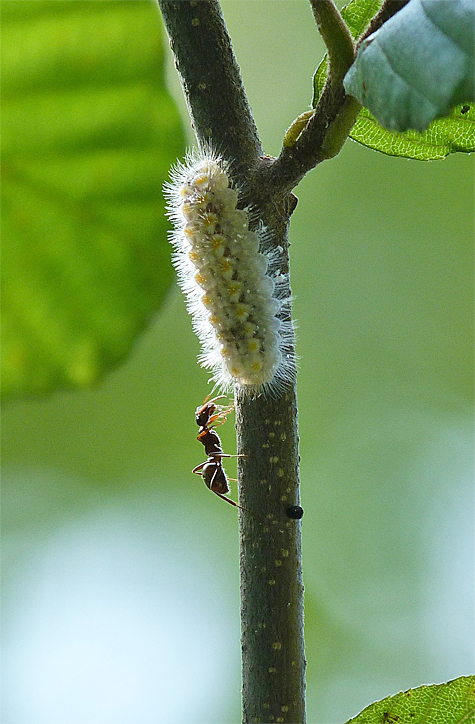
As I watched, another caterpillar crawled out towards the end of the branch it had been on and down to the underside of one of the drooping alder leaves. Once there, it seemed to be fixing itself to the leaf with silk. The caterpillar was still there at the end of the day. It appeared to be preparing to pupate, forming a chrysalis.
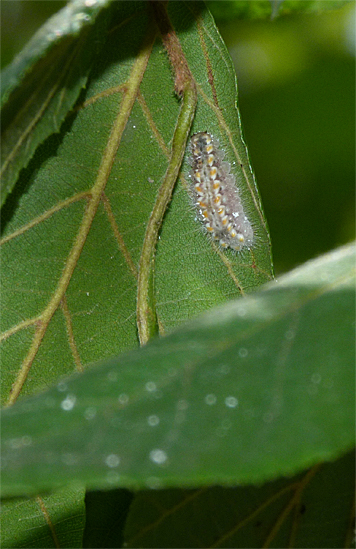
When I returned Monday morning (9/1), the caterpillar was gone. There was still silk visible on the leaf, but the caterpillar, or chrysalis, had disappeared. Where had it gone? I know that some wasp species hunt caterpillars, paralyze them and place them in their nests as food for their larvae. I don’t know if harvester caterpillars are on the menu, but that’s the only likely solution I can think of as happening here.
I wasn’t able to locate any of the caterpillars again until Wednesday morning (9/3) when I saw one tucked in on the edge of the underside of one of the alder leaves. It was forming a chrysalis. Considering the progress it had thus far made, the caterpillar had probably been there the day before. I, was not on site the day before.
While I watched the caterpillar, it was being inspected by a lady beetle. Had the beetle mistaken the harvester for a colony of aphids? The caterpillars are said to give off an “aphid” smell in order to fool the ants that tend to and harvest honeydew from the aphid colonies, so perhaps that explains the lady beetle’s curiosity.
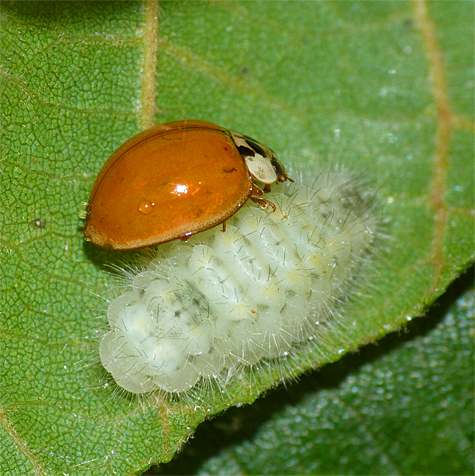
The chrysalis was fully formed on Thursday morning (9/4).
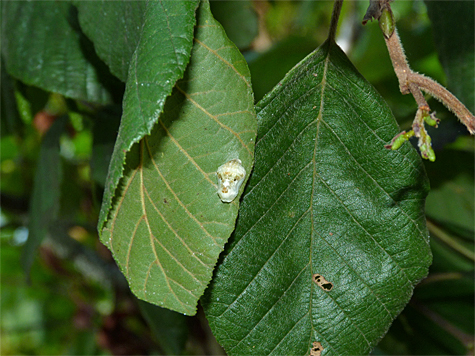
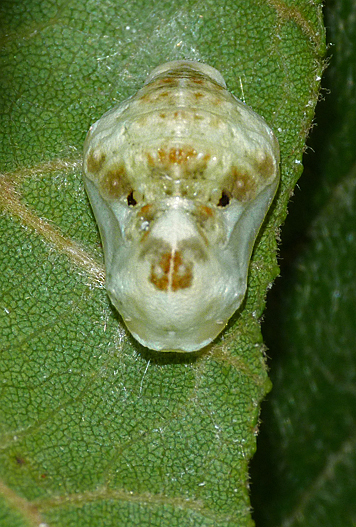
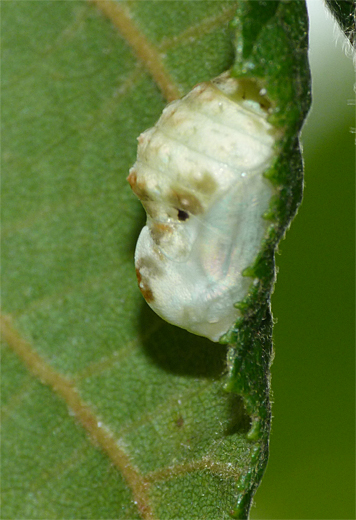
Anywhere from 10 to 14 days could pass before a butterfly emerges from the chrysalis. I’ll be checking it every day.
But in the mean time, there are other insects and plants to watch.
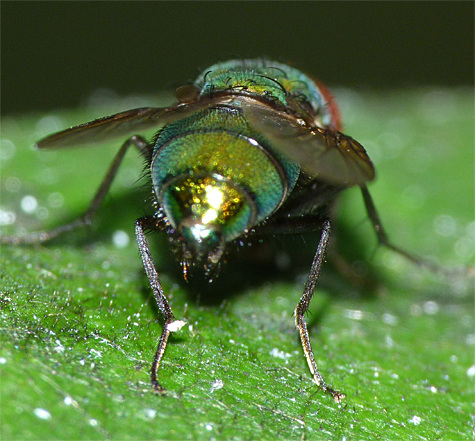
Green bottle flies play an important role in forensic science. There’s a distinct sequence or timing to what and when specific insects visit and lay eggs on dead animals. Their larvae (maggots) also develop at a specific rate. Knowing what insect larvae are present and what stage of development they are in, helps in determining time of death. The fly in the above photo was visiting hazel alder for some sweets. It wouldn’t sit still long enough for me to get a shot of its face.
Various paper wasps, the builders of those gray, paper, pendulant hives you see in doorways, sheds, garages, and of course in shrubs and trees, also pay visits to the hazel alder for some energy food, honeydew.
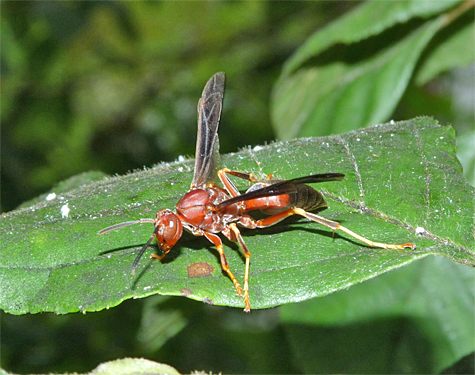
Right next door, a Carolina satyr rests between forays to the alder to, yes, also imbibe the nectar of aphids.
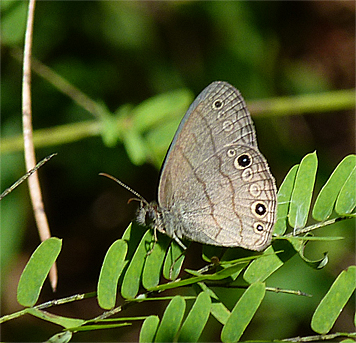
And finally, on the Dinosaur Trail, the strawberry-like seed pods of bursting heart are doing just that, bursting open, to reveal the bright red seeds within.
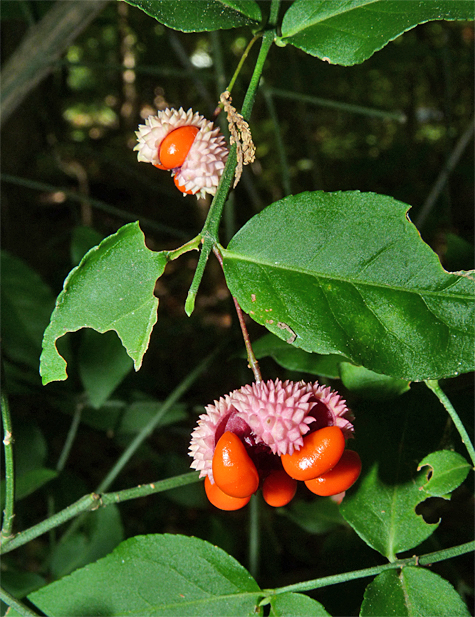
As always, see you in the Wild!
Great information & images, as always.
Thanks, Judy!